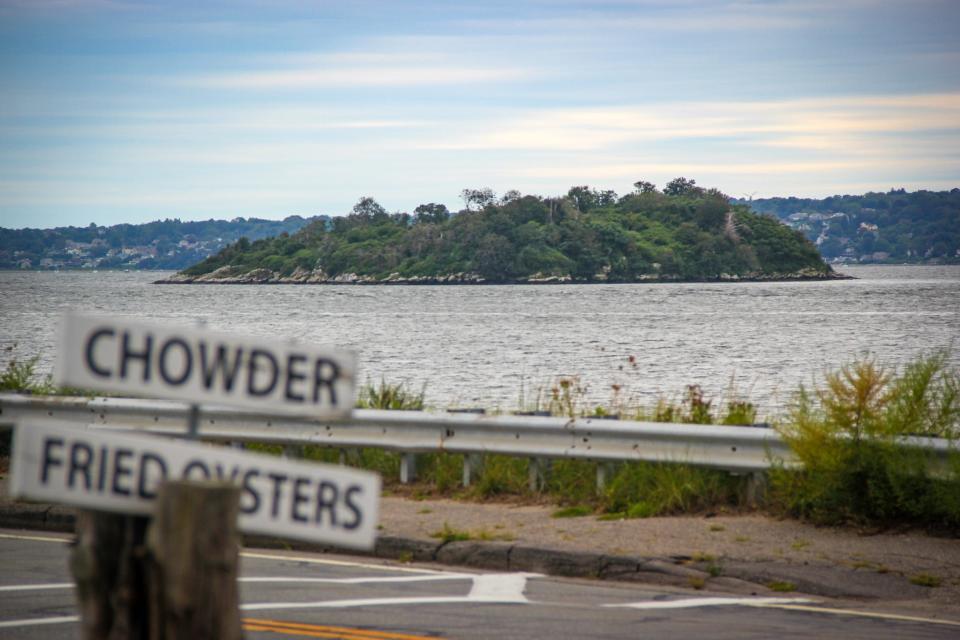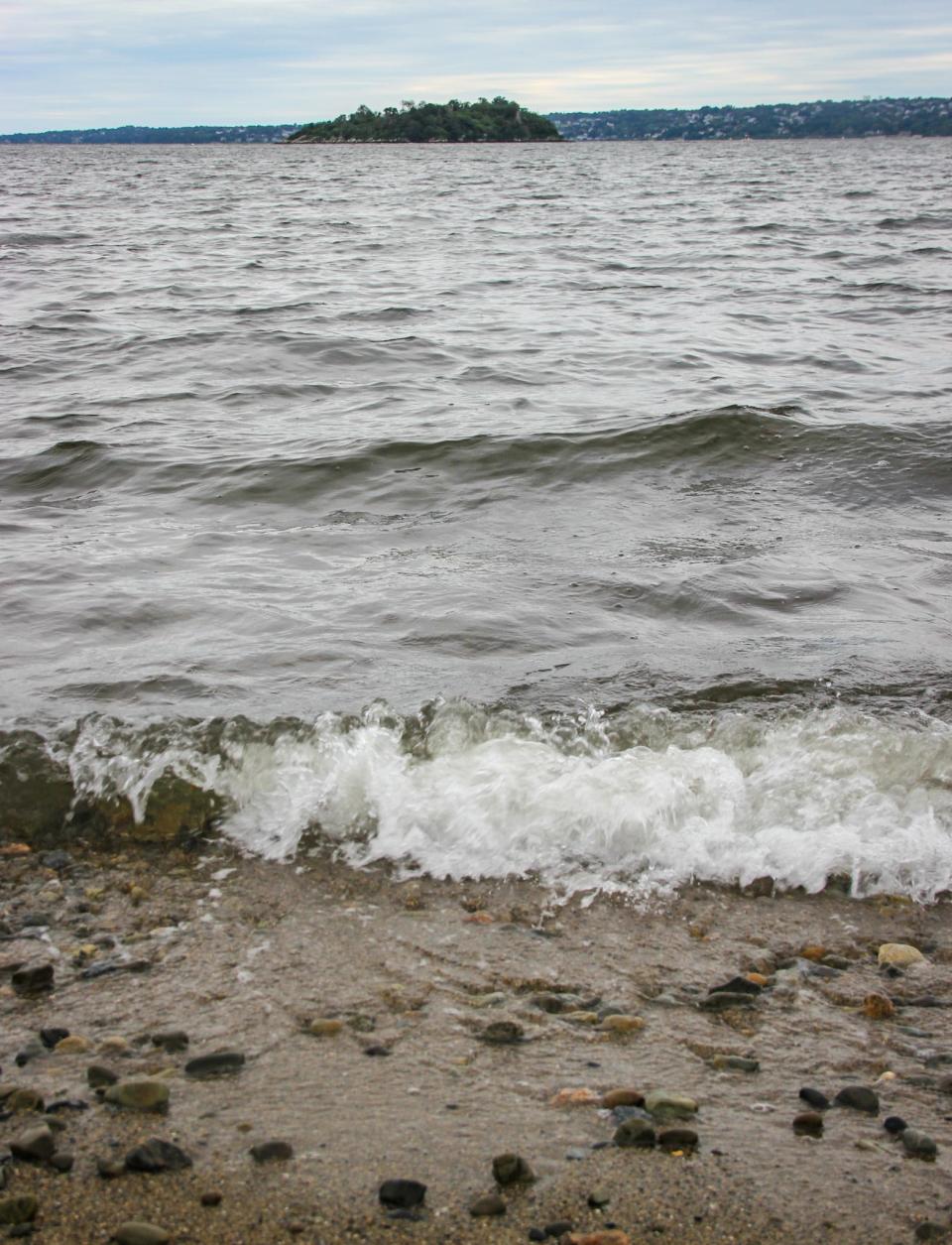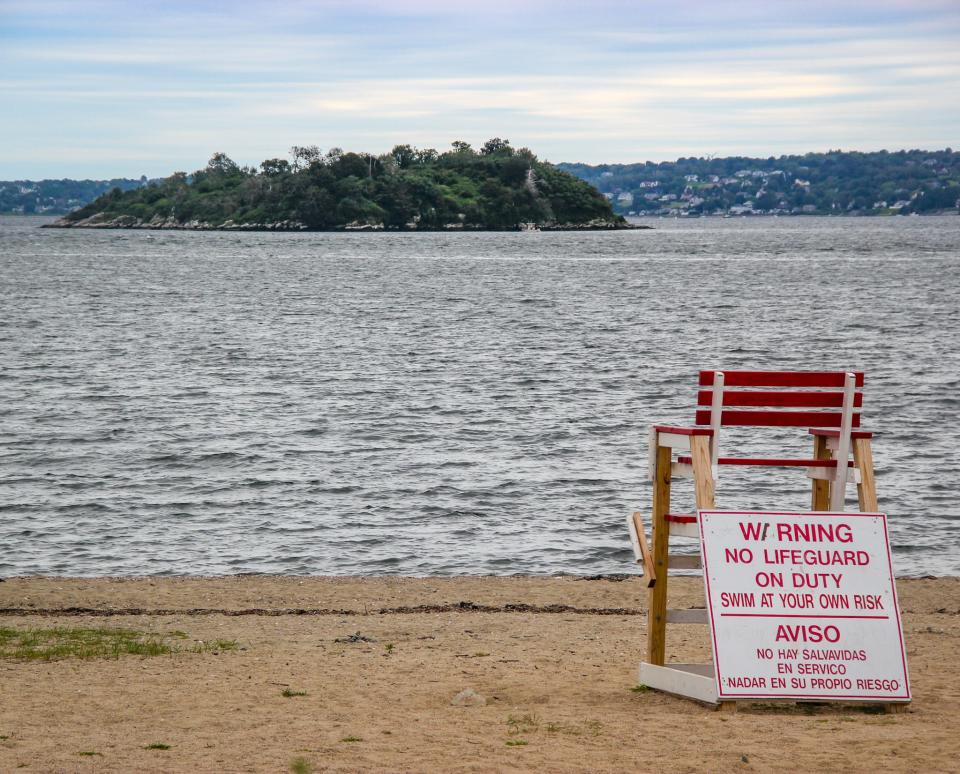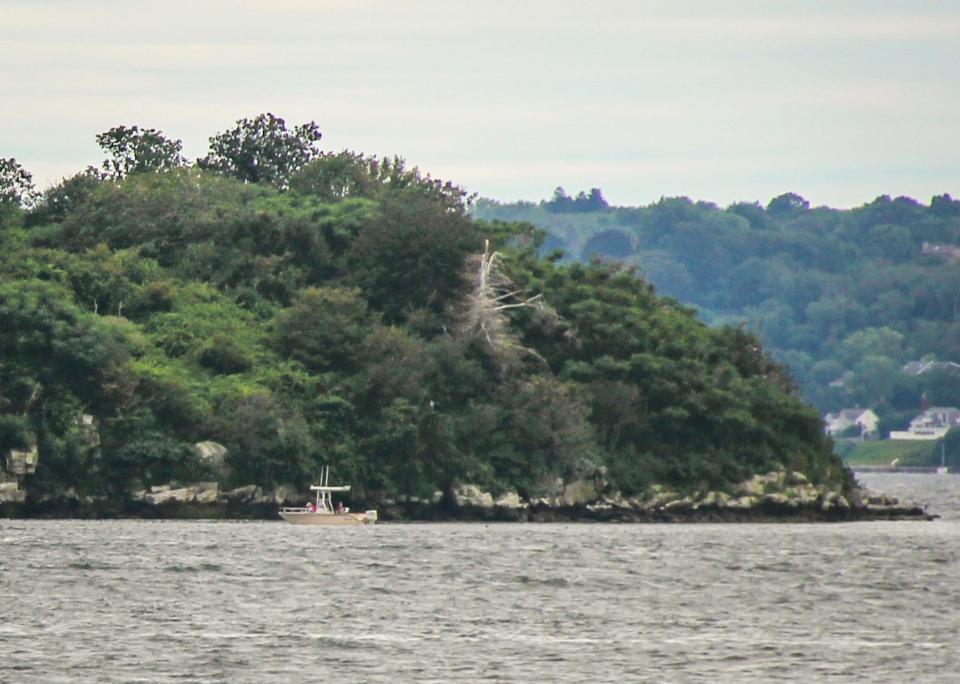SouthCoast Wonders: What's on this island off Tiverton? Is it full of rats and snakes?
Cast your gaze toward the water while following the casual curves of Main Road in Tiverton and you’ll see it hunkered out there in the Sakonnet River, tantalizingly close but too far to see any detail: a mysterious, overgrown, deserted island.
It's deserted, at least, by humans. Local legend has it that the island is overrun by snakes, or, in some versions of the tale, rats — as one reporter heard in his youth, giant, man-eating rats.
Though from the shores of Tiverton’s Grinnell’s Beach the island looks near enough to reach by kayak or even by swimming, visiting it isn't recommended — or allowed. What’s the story with this island? What is its history, and what’s out there? SouthCoast Wonders finds out.
Southcoast Wonders: How did the Midwest end up in a Fall River neighborhood?

What is that island in the Sakonnet River called?
Look it up on Google Maps and there it is: Addams Island.
That’s not its name. Google doesn't know everything.
“I have no idea where the name Addams Island came from,” said Stephen Luce, director of the Portsmouth Historical Society. “I have never heard anyone refer to it by that name.”
No one else contacted by The Herald News was familiar with the name Addams either, or even where that could've come from. It’s been long known as Gould Island — sometimes Little Gould Island, to distinguish it from another Gould Island in Jamestown, R.I.

But over nearly four centuries of New England history, Gould Island has had many names.
What the natives called it before European settlement is lost to history. According to “Historical Tracts of the Town of Portsmouth, Rhode Island,” Thomas Goulding of Newport, R.I., bought the island from the local indigenous people in 1657, and documents thereafter call it Goulding’s Island for a while. During the time of King Philip’s War, in the 1670s, “it was known as Gold Island and is probably a corruption of Gould.”
A booklet published in 1888 refers to it as Corsaires Island, perhaps playing into another local legend — that the island is riddled with caves, perhaps holding pirate treasure. (Unknown, but unlikely, so don't go over there with a shovel.)
Those who believe the stories that wild vermin have taken over the island, allowed to breed unchallenged and isolated from the rest of the world, sometimes call it Snake Island or Rat Island. But Gould is the most common name and the one that's stuck, despite what Google says — according to Susan Anderson of the Tiverton Historical Society, “I haven't really seen anything else on maps since the Revolution different from that.”
Remembering Lincoln Park: Dartmouth amusement park was a summer hotspot — but why did it close?
What’s the history of Gould Island?
Though it's close to Tiverton, Gould Island is also not Tiverton. The island is part of Portsmouth, R.I.
It's hard to imagine now, but at one point these two quaint communities were war zones. And Gould Island played a role in that.

It once contained a fort known as the Owl's Nest, by some accounts built during King Philip’s War. During the Revolutionary War, in 1778, the fort covered the movement of Colonial forces during the Battle of Rhode Island.
In the 1800s, the Russian consul to New York Alexis Eustaphieve visited Tiverton and seems to have fallen in love with the town as a getaway from the bustle of Moscow or Manhattan — and especially loved Gould Island. Although Gould is only about 6 acres and basically a large rock covered in trees, its mystery enchanted Eustaphieve, who summered there for 40 years and never wanted to leave. According to "A Patchwork History of Tiverton Rhode Island," Eustaphieve “expressed his intention of being buried upon its highest peak, and even made arrangements for his monument thereon.”
According to legend, the island didn’t love him back, and the Russian was found dead on the island of a rattlesnake bite. This is thought to be the origin of the snake infestation myth. But as ironic as it would be that the island he loved actually killed him, records show Eustaphieve died in New York. No snakes were involved.
Attempts to civilize Gould Island never took. Just after the turn of the 20th century, written accounts indicate, a railway company built a dance pavilion and refreshment stands on Gould Island, ferrying merrymakers there from Island Park. But its time as an attraction only seems to have lasted one season. And in 1912, a group of young pranksters in Portsmouth got their hands on 100 pounds of dynamite from a coal mine, carried it out to Gould by boat, and created an explosion so loud and bright that locals believed a meteor had crashed there — an explanation possibly suggested by the young men themselves.
Home shopping: Did Sears Roebuck sell do-it-yourself kit homes by mail in Fall River?

Who owns Gould Island and what is there now? Can I visit?
Since the 1860s, the island was privately owned by the Church family, eventually passing into the hands of Helen Lawton Hathaway of Tiverton. A 1955 Providence Journal interview with Hathaway noted that she'd had offers to buy it, but always turned them down. “I have never been out there and I never expect to go, but I plan to hold onto the island,” she said at the time.
About 10 years later, Hathaway gave it up — but rather than sell it, she donated it to the Audubon Society of Rhode Island.
The group still owns Gould Island today. It’s a protected bird sanctuary, off-limits to all visitors except the kind with feathers. It's unlikely Gould is infested with giant killer rats; instead, it’s a productive nesting spot for herons, egrets and cormorants.
"Truthfully, most people would not want to explore the island because it is a solid rock outcrop, difficult to get to by paddling and challenging to tie up," said Scott Ruhren, senior director of conservation at the society. “The terrain is steep and the vegetation is dense.”
Indeed, it’s not particularly safe for visitors, with dangerously high sheer cliffs in some spots. Even if you didn’t fall and break a leg, the island is covered in guano, or bird poop. Despite what Eustaphieve thought, it doesn’t sound like a particularly idyllic getaway spot. Best to leave it be and admire it from afar.
Dan Medeiros can be reached at dmedeiros@heraldnews.com. Support local journalism by purchasing a digital or print subscription to The Herald News today.
This article originally appeared on The Herald News: Gould Island near Tiverton a source of mystery for centuries

